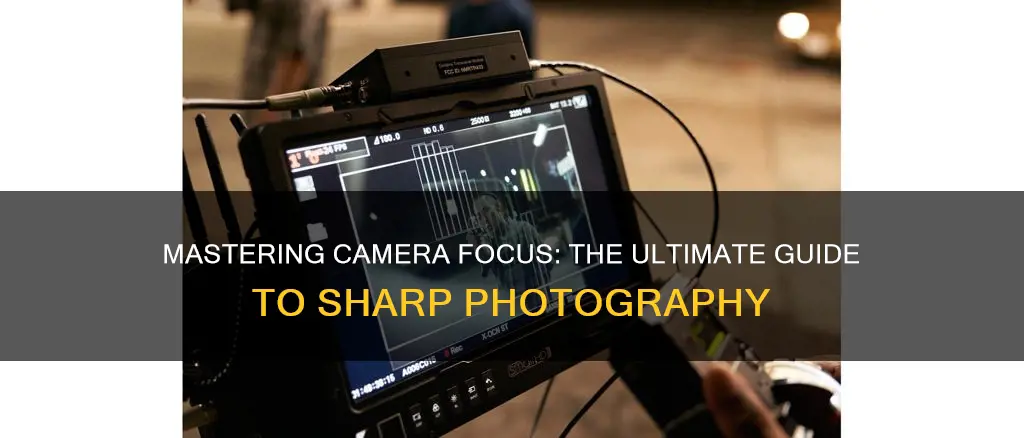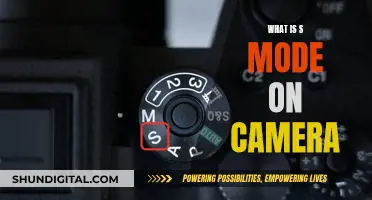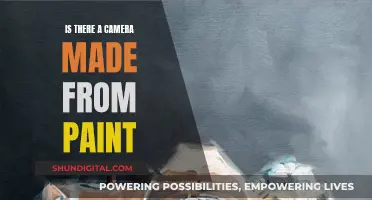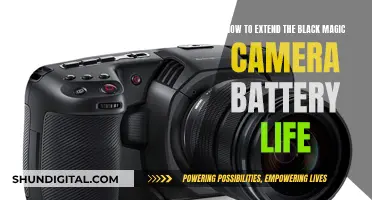
Camera focus is a fundamental aspect of photography and filmmaking, determining what appears sharp, clear, and detailed in an image or scene. Focus can be manipulated to guide the audience's attention, highlight key plot points, and convey emotions, thus enhancing the storytelling.
There are two main types of focus: manual and autofocus. Autofocus, a comparatively new invention, is when the camera system automatically adjusts the lens to focus on a selected subject. Most photographers use autofocus due to its convenience and speed. However, manual focus allows for more precision and is useful when the camera struggles to focus, such as in low-light conditions.
Focus can be described in terms of depth of field, which refers to the area around a subject that appears sharp. A deep depth of field has a larger area in focus, while a shallow depth of field has a narrower area. The depth of field can be manipulated by changing the aperture, lens focal length, or distance from the subject.
Different types of camera focus techniques, such as rack focus and selective focus, are employed to achieve specific visual effects and enhance the narrative impact of a scene. Focus is a powerful tool that, when used creatively, can elevate a film from mere moving pictures to a stirring work of art.
| Characteristics | Values |
|---|---|
| Type | Manual, Auto |
| Focus Area | Single Area, Continuous, Multi-Area, Predictive |
| Focus Lock | Enabled, Disabled |
What You'll Learn

Manual vs. autofocus
Manual focus and autofocus are two different ways of achieving a clear shot with your camera. In this article, we will explore the differences between these two focusing methods and provide an in-depth comparison to help you decide which one to use in your photography or filmmaking.
Autofocus is a convenient feature that allows your camera to set the focal point automatically. It handles the work of ensuring your image is sharp and clear. Autofocus systems use a motor in the camera or lens to focus on a subject you've selected or let the camera choose for you. Autofocus is generally faster and more accurate, especially when tracking moving subjects. It is an excellent choice for beginners, sports photography, wildlife photography, and fast-moving subjects.
Manual focus gives you greater creative control over your images. With manual focus, you determine the focal point by adjusting the lens ring. It offers a more precise way of focusing and is ideal for situations where autofocus may struggle, such as low-light conditions, macro photography, and shooting through glass or fences. Manual focus is generally slower and requires more time to adjust the focus, making it less suitable for capturing fast-moving objects.
Advantages of Autofocus:
- Faster and more convenient, especially for beginners.
- Better for capturing fast-moving subjects like sports or wildlife.
- Has advancements like tracking and Eye AF to lock focus on a subject.
Disadvantages of Autofocus:
- May struggle in low-light conditions or when there are many objects in the scene.
- Not as precise as manual focus, especially for landscape or portrait photography.
- May have a slight lag, which can be an issue for action photography.
Advantages of Manual Focus:
- Greater creative control over the focal point.
- More precise and reliable, especially in tricky lighting conditions.
- Essential for certain types of photography like macro, deep landscape, and astrophotography.
Disadvantages of Manual Focus:
- Slower and less suitable for capturing moving subjects.
- Requires more time and manual adjustments.
- Not ideal when you need to trigger a shot quickly.
When to Use Autofocus:
- Use autofocus for fast-moving subjects like wildlife, sports, or street photography.
- When you're working solo and need the camera to handle focusing.
- For unpredictable situations or B-roll footage.
When to Use Manual Focus:
- Use manual focus for macro photography to achieve precise focus at high magnifications.
- For deep landscape photography to nail the hyperfocal distance.
- In low-light conditions, such as astrophotography or nightscapes.
- When you need to focus on a precise point, like portraits or shallow depth of field shots.
- When shooting through foreground distractions like snow, tree branches, or fences.
The choice between manual focus and autofocus depends on your specific needs and shooting conditions. Autofocus is generally faster and more convenient, making it ideal for beginners and capturing moving subjects. On the other hand, manual focus offers greater creative control and precision, especially in situations where autofocus may struggle. Ultimately, both focusing methods have their advantages and understanding when to use each will help you improve your photography skills.
The SX-70 Polaroid Camera: A Revolutionary Invention of 1972
You may want to see also

Depth of field
The transition from sharp to unsharp is gradual, and there is no precise point where the image suddenly becomes blurry. To define what is considered "acceptably sharp," photographers use a concept called the "circle of confusion." When this circle becomes perceptible to our eyes, the region is considered outside the depth of field and is no longer acceptably sharp.
There are several factors that influence the depth of field in your photos:
Aperture
Aperture is the opening in your lens that lets light pass through to the sensor. A larger aperture, which corresponds to a smaller f-stop number, will result in a shallower depth of field. Conversely, a smaller aperture or a larger f-stop number will produce images with a larger depth of field.
Camera-Subject Distance
The distance between the camera and the subject also affects the depth of field. The shorter the distance, the smaller the depth of field. When taking close-up shots, you may notice that it's challenging to get the entire subject in focus, even with a small aperture. This is because the closer you are to your subject, the shallower the depth of field becomes.
Focal Length of the Lens
The focal length of the lens also plays a role in determining the depth of field. Wide-angle lenses (short focal lengths) generally have a deeper depth of field compared to telephoto lenses (long focal lengths). However, this relationship is not as straightforward as it seems. If you adjust the camera-subject distance to maintain the same magnification of your subject, you'll find that the depth of field remains constant, regardless of the focal length.
Additionally, sensor size can also impact the depth of field. Cameras with smaller sensors tend to have larger depths of field. However, to make a fair comparison, you need to use lenses with the same effective focal length so that the fields of view are identical.
Limitations and Extensions of Depth of Field
While depth of field is primarily influenced by aperture, camera-subject distance, and focal length, there are techniques and equipment that can alter or extend the apparent depth of field. For example, focus stacking involves combining multiple images focused on different planes to create a final image with a greater apparent depth of field.
In conclusion, understanding depth of field will give you greater artistic freedom in your photography. By manipulating the aperture, camera-subject distance, and focal length, you can control the depth of field to create the desired effect in your images. Experiment with your camera, try different lenses, and analyze your photos to enhance your understanding of depth of field.
Motorola's 360 Moto Mod Camera: How Many Megapixels?
You may want to see also

Autofocus area modes
Single-Point AF-Area Mode
This mode enables you to select a single focus point, making it ideal for stationary or slow-moving subjects. It offers pinpoint accuracy and ensures that the camera focuses precisely where you want it to. This mode is suitable for situations where you need to focus on a specific area, such as the eyes of your subject.
Dynamic AF-Area Mode
The dynamic AF-area mode is versatile and useful for capturing moving subjects. With this mode, you initially select a single focus point. However, if your subject moves, the camera automatically engages the surrounding focus points to maintain focus. This mode is excellent for wildlife, sports, and action photography, as it allows you to track the subject's movement within the frame.
3D Tracking AF-Area Mode
The 3D tracking mode is another option for capturing moving subjects. It uses an algorithm to track the subject's movement and adjust the autofocus point accordingly. This mode works best when there are distinct differences in colour and contrast between the subject and the background. For example, tracking a dark bird against a clear sky would be effective, while a busy background might make it more challenging.
Auto-Area AF-Area Mode
The auto-area mode is a fully automatic mode where the camera decides which focus points to use. It selects the subject based on contrast differences within the frame. This mode is useful when you need to focus quickly, especially on objects close to the camera. However, it's important to note that you have less control over the focus point in this mode.
Group AF-Area Mode
The group AF-area mode is ideal for situations where you want to focus on a specific area or group of subjects within the frame. It allows you to select a small number of autofocus points to ensure accurate focusing. This mode is commonly used in wildlife and sports photography, as well as group shots in portraiture.
Pinpoint AF-Area Mode
The pinpoint AF-area mode is designed for Nikon cameras and is particularly useful for stationary subjects. It utilises contrast detection autofocus to achieve precise focus on a very small portion of the scene. This mode is excellent for landscapes, architecture, product photography, and macro photography, where accurate focus on a specific area is crucial.
Annke Cameras: Where Are They Manufactured?
You may want to see also

Focus vs. sharpness
Focus and sharpness are two distinct but related concepts in photography. While focus refers to the area of an image that contains detail, sharpness is the degree of detail within the image.
Focus is achieved when light rays converge on a digital sensor to create a clear image. The area of the image that is in focus will be sharp, with the level of sharpness varying within this area. The size of the area in focus is determined by the depth of field, which can be adjusted by changing the aperture, or the distance from the subject. A small aperture will result in a shallow depth of field, with a small area of the image in focus, while a wide aperture will produce a deep depth of field, with a larger area in focus.
Sharpness, on the other hand, is determined by two characteristics: resolution and acutance. Resolution refers to the level of detail in an image, which is influenced by the number of pixels on the camera's sensor. Acutance, meanwhile, is the degree of detail between objects in an image, determined by the amount of contrast between each pixel. A higher acutance will result in higher levels of sharpness, while a lower acutance will lead to reduced sharpness.
While focus and sharpness are distinct concepts, they are closely linked. Only areas that are in focus can be sharp, and the area of focus is typically where the sharpest elements of an image will be found. However, it is important to note that adjustments to sharpness will not affect focus. This is because focus refers to the area where detail is located, while sharpness refers to the degree of detail within that area.
The Evolution of Fake Cameras: Where Are They Made?
You may want to see also

Focus in filmmaking
Focus is a key aspect of filmmaking, and it involves more than just ensuring that an image is sharp and detailed. Directors and cinematographers can manipulate the depth of field to convey a message, reveal information, or evoke an emotional response from the audience.
Techniques for Focus in Filmmaking
Deep Focus:
Deep focus involves keeping all elements in the frame, from the foreground to the background, in sharp focus. This technique was popularised by Orson Welles in "Citizen Kane", where it was used to great effect, allowing for dynamic frame compositions and enhancing the storytelling. Deep focus provides clarity and immersion, emphasising the relationships between different elements within the frame.
Shallow Focus:
Shallow focus is the opposite of deep focus, where only a specific area of the frame is in sharp focus, isolating the subject from its surroundings. This technique is often used to draw attention to a particular element, such as a character's emotions or reactions, and can also be used to hide unwanted background details or create a sense of intimacy.
Rack Focus (Pull Focus):
Rack focus is a powerful storytelling tool where the camera operator changes the focus from one subject to another within the same shot, creating a sense of depth and significance. This technique guides the audience's attention, builds suspense, and evokes emotions by choosing which elements to focus on.
Soft Focus:
Soft focus is a technique that deliberately creates a slightly blurry or hazy image, often used in flashbacks or love scenes to evoke emotion. It is achieved by reducing the sharpness of the image, either during filming or in post-production, and it gives the scene a dreamy, romantic, or nostalgic atmosphere.
Split Focus (Split Diopter):
Split focus uses a split diopter filter to achieve two separate planes in focus simultaneously, allowing for unique visual storytelling. This technique can convey multiple perspectives, emphasise simultaneous actions, and provide visual symbolism or hide information in the background.
Autofocus vs Manual Focus
Filmmakers can achieve focus either through autofocus, where the camera automatically adjusts the focus based on the subject's movement, or through manual focus, where the camera operator manually adjusts the lens to achieve the desired sharpness.
Autofocus is convenient and ensures consistent results, especially with modern advancements. However, manual focus offers greater control and is preferred in cinematic productions as it allows for intentional focus effects and enhances artistic expression.
In conclusion, focus is a powerful tool in filmmaking that shapes the viewer's experience and enhances storytelling. By utilising various focus techniques, filmmakers can manipulate the audience's gaze, evoke emotions, and create a more immersive cinematic journey.
The First Camera: A Historical Perspective
You may want to see also
Frequently asked questions
Camera focus is the sharpest area of the image. It determines what is in sharp, clear detail and what appears blurry.
There are two main types of focus: manual and autofocus. Manual focus requires the photographer to turn the lens' focus wheel until the desired part of the image is in focus. Autofocus, on the other hand, is when the camera automatically adjusts the focus based on incoming light so that the subject appears sharpest.
Achieving perfect focus in filmmaking involves preparation, using the right equipment, effective communication, and adaptability. It's important to know your script and storyboard intimately, use prime lenses with wide apertures, invest in a high-quality follow focus system, employ focus peaking technology, and carry out autofocus features smartly.
Autofocus is when the camera automatically adjusts the focus based on incoming light. Manual focus, on the other hand, requires the photographer to turn the lens' focus wheel to bring the desired subject into focus. Autofocus is usually faster and more convenient, while manual focus allows for more precision and control.







